Ian Cross - Moyes
By the United Nations definition there are 14 countries in Oceania, three of which, Australia, Papua New Guinea, and New Zealand, have hydrocarbon production, and nine (9) dependencies or other territories. Figure 1 below shows their location in the Western Pacific.
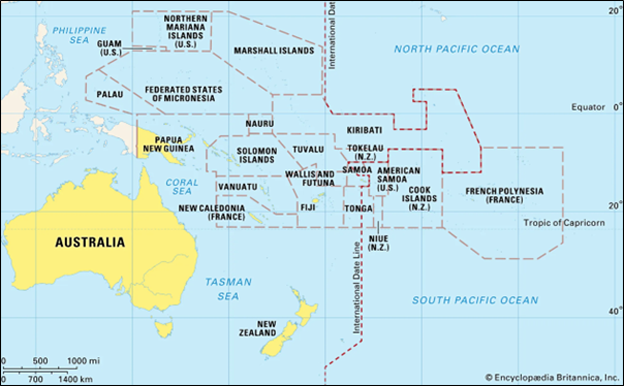
Figure 1 – Map of Oceania (Encyclopaedia Britanica, Inc)
The main tectonic features of the Southwest Pacific, in Figure 2 below, are dominated by subduction with the Pacific Plate subducting westwards underneath the Australian Plate. There are many publications available for those interested to understand the rather complex and diverse tectonics of the region.
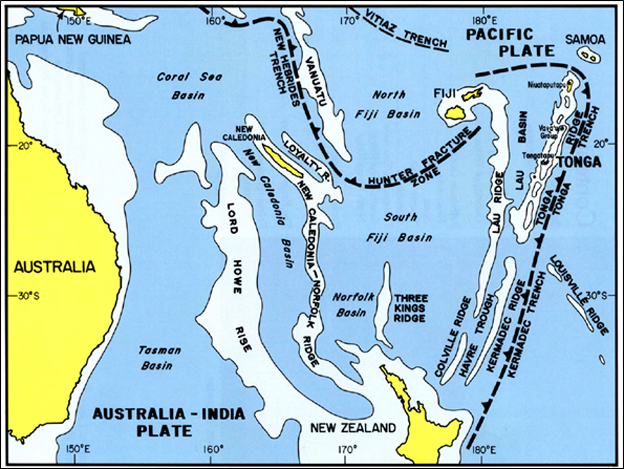
Figure 2 - Tectonics and Main Features of the Southwest Pacific (Gatliff, SOPAC, 1990)
The islands of Palau, Fiji, Solomon Islands, Tonga, Vanuatu, Samoa and New Caledonia have seen various levels of oil and gas exploration, interest, and promotional activity to attract investment; however, no serious activity other than possible research seismic projects have been reported in French Polynesia, Guam, American Samoa, Northern Mariana Islands, Cook Islands, Wallis and Futuna, Tokelau, Niue, Tuvalu, Kiribati, Marshall Islands, the Federated States of Micronesia and Nauru.
Interestingly, the more remote islands will see some drilling activity in the next couple of years. Texas -based Palau Pacific Energy (PPE) is operator of the North Block Concession, off the northern part of the Republic of Palau, east of the Philippines, and is planning the first wildcat in the country. As background, Palau saw its first exploration activity in 1977 when US-company Yates Petroleum (subsequently taken over by EOG Resources) was awarded a licence and acquired seismic and later TMBR/Sharp held a permit, the area of which was then licensed to PPE, as shown in Figure 3 below.
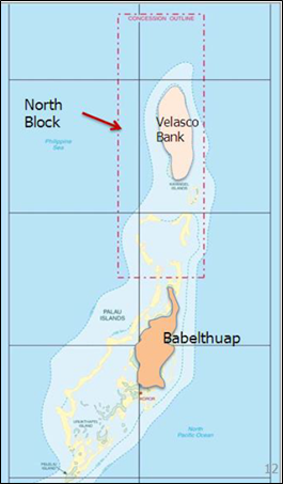
Figure 3 – Outline of Palau Pacific Energy’s North Block Concession, Palau (PPE, 2025)
The target of PPE’s wildcat is a large Miocene reef on a basement ridge, designated the Velasco Bank Prospect in 40m of water in jack-up territory; Pliocene gas sands are a secondary objective. The prospect is well defined on 2D data and drill-ready. There are reports that a surface geochemical survey gave samples with anomalous oil indications. A 2022 resource report by Gaffney Cline & Associates (GCA) shows impressive volumes of over 700 million barrels of oil (MMBO) unrisked Prospective Resources for the prospect. Forward plans after a successful test may include the acquisition of 3D seismic.
Of the other remote islands in Oceania, Fiji awarded a series of concessions between 1969 and 1973 to Amoco, Shell, Magellan Petroleum, Mobil, Southland Oil, Southern Pacific Petroleum, Oxoco, International Petroleum with Love Oil, Atlantic and Oceanic Resources and the Investment Corporation of Fiji. The designated block outlines are shown in Figure 4 although more detective work is needed to understand who had what at the time: the research was conflicting for this article and a series of farmins at the time complicated the issue.
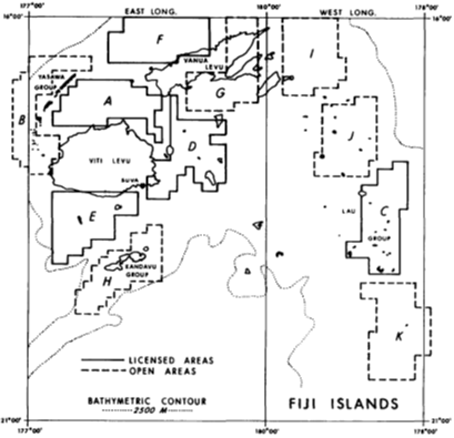
Figure 4 – Fiji Block Outlines 1973 (Durkee, AAPG Bulletin, 1973)
Seismic work was undertaken by a number of these companies or groups, but by the mid-1970s only Blocks A and D were held under licence and in 1978 a new Petroleum Act was passed and revised block outlines introduced (Figure 5). New companies included Dakota Exploration, Mapco and Pacific Energy & Minerals Limited (PEML).
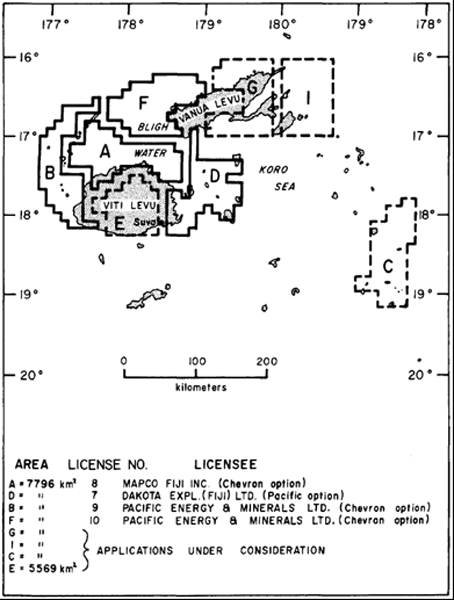
Figure 5 – Fiji Block Outlines 1979 (Katz, AAPG Bulletin, 1979)
Fiji then saw a series of on- and offshore wells drilled in complex geology between 1980 and 1982. By this time operators included Chevron, a Worldwide Energy Corporation led by PEML and Bennett Petroleum. Chevron drilled Bligh Water-1,Great Sea Reefs-1, PEML Buabua-1 and 2, Bennett Maumi-1 and Cakau Saqata-1, whilst Worldwide Energy Corporation drilled Yakuila Island-1. Figure 6 below is a well correlation taken from a South Pacific Applied Geoscience Commission (SOPAC) publication (Rodd, 1993).
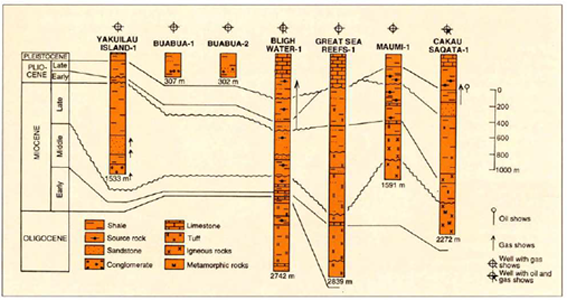
Figure 6 – Correlation of Fiji Wells (Rodd, SOPAC, 1993)
After a lull in activity, Australian company Global Petroleum held blocks during the mid-2000s, and in 2009 the Chinese funded Southern Cross and Seu Tuinavatu Petroleum Mines & Minerals were awarded blocks; subsequently revoked following, it is understood, failure to fulfil work programmes. In 2019 there were reports that Fiji-based Akura with some New Zealand backing was negotiating for onshore acreage in Fiji having previously held a position in the country between 2009 and 2014. A 1993 SOPAC publication highlights over 20 reefal leads of Late Miocene and Pliocene age. An example of one in the Bligh Water Basin is shown below in Figure 7.
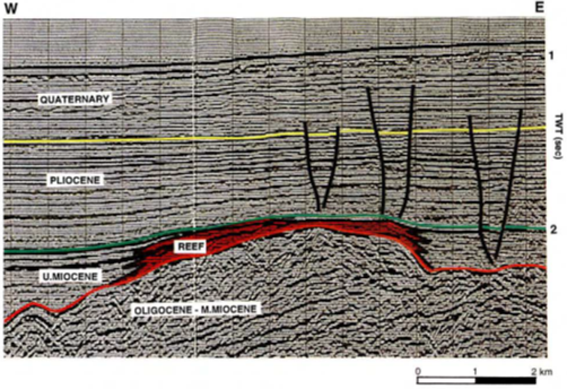
Figure 7 – Example of a Miocene Reef Lead, Bligh Water Basin, Fiji
The Solomon Islands has been the venue of a number of seismic surveys including those undertaken by majors Shell, Amoco, Gulf Oil and Mobil during the 1970s. No wells have been drilled in the Solomon Islands, although the Shell-led consortium of Ocean Exploration Company’s 1975 L’Etoile-1 wildcat off the Papua New Guina (PNG) island of Bougainville is close to the Solomon marine border. The well was however a failure as the predicted reef in the Bougainville Basin was a shallow volcanic basement high. The Solomons is the venue of a number of unexplored basins to its south and west which could offer potential. An oil seep has been reported on the coast of one of the northwestern islands; however, this could possibly be oil leaking from one of the numerous vessels sunk during WW2 in the Solomons.
Tonga saw a flurry of activity in the early 1970s when a consortium of Shell as operator, Ampol, Aquitaine, BP, Gulf Oil and Republic International Petroleum acquired seismic and drilled two onshore wells (Kumifonua-1 and 2). The group known as the Tonga Oil Exploration Consortium (TOEC) had been encouraged by the discovery of oil seeps on the island of Tongatapu and in the shallow waters of Eua Island. Both wells failed to reach their targets due to rig capacity. Magellan Petroleum was also involved in exploration in Tonga around the same time. The original TOEC concession area is shown in Figure 8 below as well as the location of islands in Tonga.
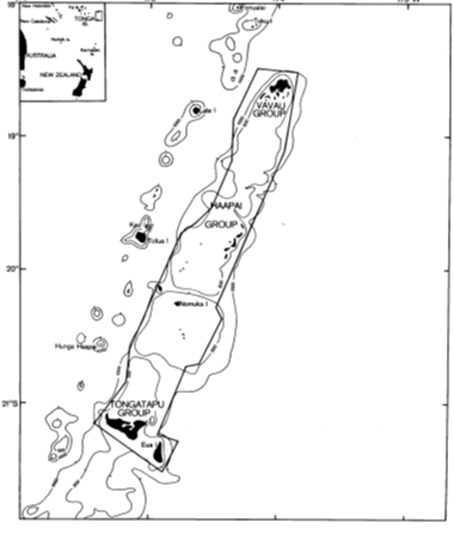
Figure 8 – Original Tonga Oil Exploration Consortium Concession Outline (CCOP-SOPAC, 1975)
Later in the 1970s USA company Webb Resources (later taken over by Samuel Gary Oil Producer) undertook seismic and drilled three (3) onshore wells (Kumimonu-1, 2 and 3) on the island of Tongatupa, to evaluate Tertiary carbonate reefs which proved to be absent. Following the exit of Webb, Sohio licensed most the areas it held in Tonga but there is no record of its activities. In 1985 new petroleum legislation was introduced in Tonga and a revised block system introduced Figure 9).
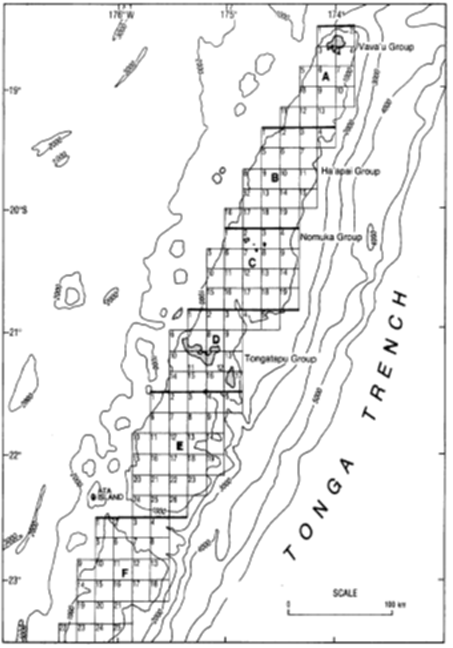
Figure 9 – Tongai Block Outlines 1986 (Katz, AAPG Bulletin, 1986)
In the early 1990s it is reported that Bird Oil was awarded acreage in the Eua Channel and that Denver-based Advantage Resources later acquired the licence from them. Advantage had planned to drill a well to assess a reef-like seismic anomaly beneath the southern part of Tongatupa, but this did not materialise. More recently, 2014-2017, Baringer Oil & Gas (also referred to as Modulus Baringer Group) held three (3) licences in Tonga, planning to drill wells targeting what were thought to be Eocene-aged reefs. The wells were not drilled and the contracts expired in 2018.
No exploration drilling has taken place in Vanuatu (formerly the New Hebrides), but a series of seismic lines have been shot in the offshore by Mobil (1972), Gulf Oil (1972), a Tripartite Group comprised of Australia, New Zealand and USA researchers (1982 and 1984) and other later research projects. Most recent exploration activity in Vanuatu around 2012 was the promotion of the VAPP4 licence to attract a partner by Interwest (Vanuatu) Ltd in the Port Sandwich Basin. A series of broad anticlinal leads had attracted the attention of the operator but being unable to find partners it seems the licence lapsed. Depth to basement in Vanuatu is thought to reach 5km in places which may be encouraging for hydrocarbon generation.
Samoa has seen no serious exploration activity, although in 2005 New York-based Padre Valencia Energy is reported to have been close to signing an agreement, but this did not seem to materialise.
New Caledonia saw some of the earliest exploration in the region with the government-controlled company, the Societe de Recherche et d'Exploitation de Petrole en Nouvelle-Caledonie drilling onshore wells in the 1950s on the Gouaro Anticline with reported hydrocarbon shows. In 1973 Texaco and Coparex filed for licences. In 1999 Victoria Petroleum with partners Sun Resources and Monoco Petroleum drilled the Cadart-1 (Gouaro Prospect) well in the PRA 436 licence on the same anticline drilling deeper into the West Coast Basin. Figure 10 below shows the location of Gouaro Anticline which had reserve potential based on press releases for a discovery in the range of 200 to 1.5 TCFG or 110 to 950 MMBO.
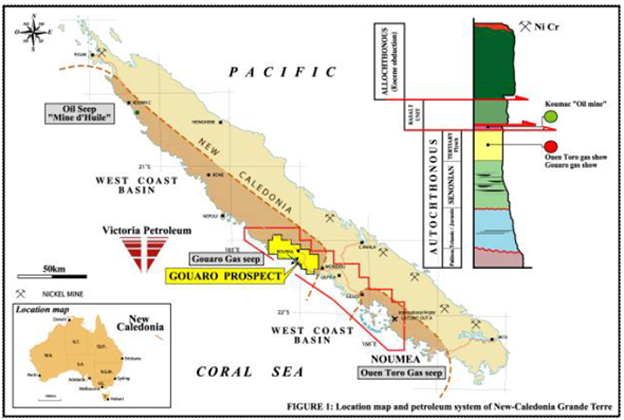
Figure 10 – Location Map of Goura Anticline (Victoria Petroleum)
The well was sidetracked and an open-hole test proved the presence of non-commercial gas in a tight Cretaceous sandstone section, with suggestions at the time that fracking could be considered in the future to unlock the gas. A seismic line across the anticline is shown in Figure 11 below showing the existence of closure at reservoir level.
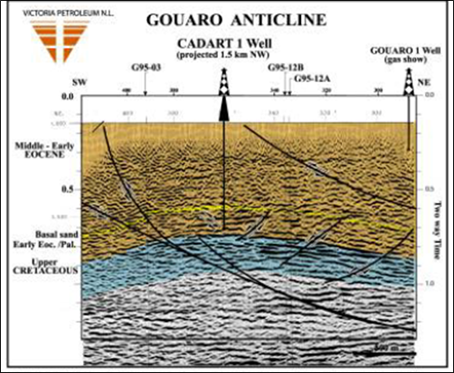
Figure 11 – Seismic Line Across the Goura Anticline (Victoria Petroleum)
The group subsequently re-licensed the licence in 2003 as APM 1178 PS with a view to drilling a second well, but this did not transpire. Despite the wells having encouraging hydrocarbon indications there has been no further drilling activities in New Caledonia. In early 2016 an Energy Holdings Offshore Limited (EHOL), Anadarko and CNOOC group conducted a seismic survey in the New Caledonia Basin (PPP55377) straddling the Exclusive Economic Zone (EEZ) with New Zealand. EHOL being a Shell New Zealand company.
When reviewing this region, it is worth considering the Lord Howe Rise, west of the New Caledonia Basin. This is a rifted fragment of Australian crust, separated from eastern Australia in the Late Cretaceous. It is a large unexplored area in water depths of mostly 700 to 1,200m, and not excessive by today’s standards. Jurisdictional of the Lord Howe rise is unclear, however. Similarly, the narrower New Caledonia-Norfolk Ridge east of and parallel to the Lord Howe Rise has unclear jurisdiction and may interest explorers in the future.
In addition to the above exploration activities regional seismic data is available over parts of the region. In the 1970s the Australian Bureau of Mineral Resources (BMR), now Geoscience Australia, acquired regional 2D seismic lines in waters within the Solomon Islands, Vanuatu, Fiji, Tonga and possibly Samoa and other areas in conjunction with SOPAC. These data can likely be obtained from Geoscience Australia.
To wrap up, several of the islands of Oceania have shied away from involvement in fossil fuel exploration the outcome of the PPE drilling will be watched with interest in Palau. Similar petroleum geology and play types to the Palau reef will exist in other parts of the West Pacific, particularly in the unexplored eastward neighbour the Federated States of Micronesia. Of interest also in the region is divided views with the island nations concerning deep-sea mining on an industrial scale. This is another subject matter.
Many thanks to Mike Whibley, Ian Longley, and Colin Ford for contributions.
References
- Various AAPG editions of Petroleum Developments in Australia and Oceania from 1954 to 1989 (AAPG Datapages)
- Hydrocarbon Prospectivity in the South Pacific – Howard Johnson, British Geological Survey, 1993
- Oil and Gas Potential of Island Arcs in the SW Pacific – A New Frontier – Greene et al, US Geological Survey, 1989
- Petroleum Geology of Shallow-water Basins Around Viti Levu, Fiji – Howard Johnson, South Pacific Applied Geoscience Commission (SOPAC), 1990
- Petroleum Potential of the Southern Part of the Tonga Platform – Maung et al, CCOP/SOPAC, 1982
- The Petroleum Potential of Fiji – Jonathan Rudd, South Pacific Applied Geoscience Commission (SOPAC), 1993
- South Pacific Marina Geological Notes – CCOP/SOPAC, 1975
- The Petroleum Prospects of the Kingdom of Tonga – Robert Gatliff, SOPAC, 1990
- Victoria Petroleum press releases, 1999 and 2000
KeyFacts Energy Industry Directory: Moyes & Co
 KEYFACT Energy
KEYFACT Energy